There are many myths surrounding the firefighter profession, but we’re here to help put out a few of those rumors.
MYTH: FIREFIGHTERS HARDLY WORK
Fact: Most Nevada fire stations are staffed full time and firefighters are there 24/7/365 thanks to a range of shift schedules that ensure firefighters are on-duty year-round. Yes, even during the 4th of July, Thanksgiving, Christmas, birthdays, kid’s soccer games, school plays, and family dinners.
Here are some examples of different shift schedules:
· 10 hours on-duty/14 hours off-duty (rotate so that you work two 10-hour shifts, then two 14-hour shifts, then 4 days (96 hours) off-duty)
· 24 hours on-duty/48 hours off-duty
· 48 hours on-duty/48 hours off-duty/ 24 hours on
· 24 hours on-duty/24 hours off-duty/24 hours on-duty/24 hours off-duty/24 hours on-duty/96 hours off-duty
Firefighter’s schedules work out to be a minimum of 56 hours a week, but can go up to 96 hours!
MYTH: YOU GET CHARGED WHEN THE FIRE DEPARTMENT COMES TO YOUR HOME
Fact: Most fire departments don’t charge you to respond when you call for an emergency. Nevada Fire Departments are usually funded by tax revenue and may vary by type throughout the state. There are exceptions to this such as billing for ambulance transport when provided by the Fire Department.
Long story short, NO. You do not get billed when the fire department puts out your fire or controls your emergency, no matter how big it is. There are no hidden fees, and we promise that our firemen will be at the site of your fire in 30 minutes or less.
MYTH:FIRE DEPARTMENTS ONLY FIGHT FIRE
Fact: Fire departments are often called “all risk” we respond to all emergencies, including:
· Responding to medical emergencies
· Hazardous material spills
· Chemical and biological emergencies
· Medical and emergency standby for all big sporting events and concerts across the state
· Technical rescue (hikers injured, high angle rescue, trench rescue, heavy equipment entrapments)
· Bomb squad
· Fire investigations for arson
· Swift water rescue
· Wildland urban interface fires
· Search and rescue all over state terrain
· Fire prevention
· Business inspections and code enforcement
· Emergency dispatching (Yes, we work in the 911 centers too)
· Vehicle accidents
And MUCH more!
MYTH: FLAMES CAUSE THE MOST CASUALTIES IN A FIRE
FACT: Smoke is generally what injures or kills in a fire. The flame is the gun, but the bullet is the smoke.
You can asphyxiate in just 3-5 minutes on thick smoke full of toxic by-products like carbon monoxide, office furnishings, or other materials.
You can easily choke, become disorientated, and fall unconscious simply from inhaling smoke. That’s why it’s so important for you and your family to have an evacuation plan.
This is also why Firefighters have to wear protective equipment and specialized breathing apparatus when they respond to fires and other hazards. The SCBA (Self Contained Breathing Apparatus) is a device worn to provide breathable air in an atmosphere that is immediately dangerous to life or health.
This is one of the many ways your local firefighters stay safe as they enter a burning building!
MYTH: FIRE TRUCKS AND FIRE ENGINES ARE THE SAME
FACT: Even though most people use the terms interchangeably, a fire engine is actually different than a fire truck.
A fire engine is how firefighters fight flames with water. They house a pump, a water tank containing hundreds of gallons of water, and up to thousands of feet of powerful hoses. The water tank actually serves as the water source until firefighters can connect to a fire hydrant. Fire engines also carry nozzles and other tools that are needed for the hoses.
A fire truck transports firefighters and their equipment, including ladders, chainsaws, fans, breathing masks, lights, rescue gear and power tools, from the station to the fire. Fires are highly unpredictable, and firefighters need to be armed and ready to do everything from pull people out of collapsed buildings to manage a fire’s rapid spread. You may also recognize a fire truck as the one with the giant aerial ladder on top.
Firefighters on the truck coordinate with the crew on the fire engine to quickly put out the fire and saves lives.
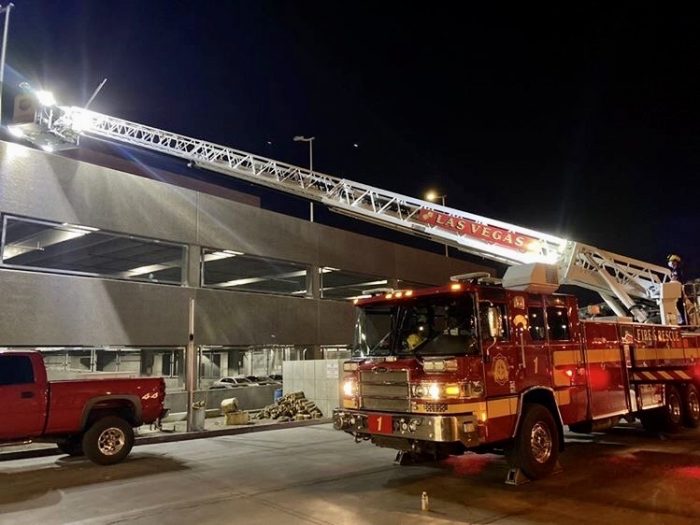
MYTH: FIREFIGHTERS JUST RESPOND TO FIRES.
FACT: Firefighters respond to much more than fires. In fact, the majority of our calls are medical emergencies. Most firefighters are highly trained in emergency medicine and are certified as advanced EMTs and paramedics on top of being firefighters.
We are actually known as the “Jack of All Trades”. Firefighters have to be trained in several areas and emergency situations like technical rope rescues, hazardous materials, bomb calls, water rescue, search/rescue, wildland, electrical emergencies, and much more! We are constantly training to be prepared for all these potential emergencies.
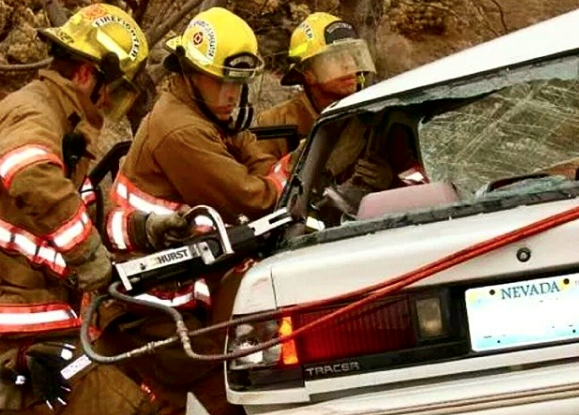
MYTH: FIREFIGHTERS HAVE DOGS AT THE STATION.
FACT: We don’t, but we wish we could! We love all animals and wish we could have dogs around again.
Have you ever wondered why Dalmatians are our four-legged mascot? Way back when horse-drawn fire carts were a thing, Dalmatians were trained to run in front of the engines and bark at bystanders as a warning that the engine was coming. This helped clear a path to quickly guide the team to the fire.
MYTH: FIREFIGHTERS HAVE PLUSH LIVING QUARTERS AND SIT AROUND ALL DAY.
FACT: Most firefighters sleep in small twin size beds within shared living spaces separated by curtains. It’s important for us to be in a state of constant readiness, day and night. We have to be able to jump out of bed quickly to respond to critical emergencies. Bedrooms are usually not set up as most people think because we are rarely in them!
MYTH: FIREFIGHTERS HAVE SOMEONE COOK FOR THEM.
FACT: We actually pool our money daily, shop for our food at the local grocery store (say hi if you see us!) and cook for the crew.
This is a very important part of living in the firehouse. It’s vital for us to fuel our bodies with good food to perform the hard work we do every day for our community. One bonus about cooking so much is that we have some awesome chefs in the house now!
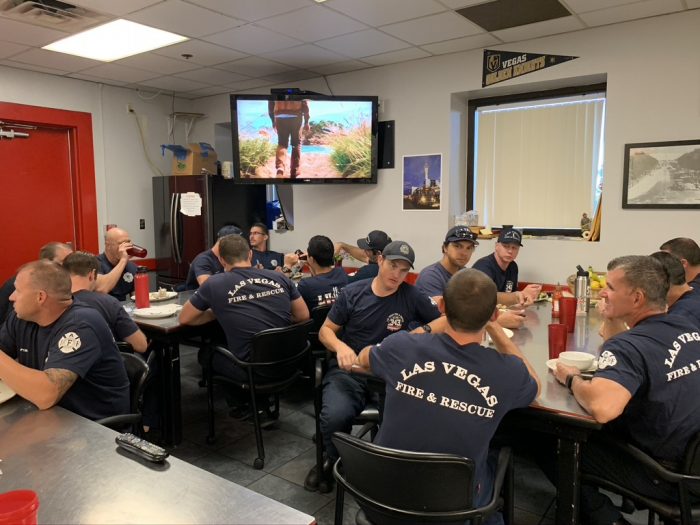
MYTH: FIREFIGHTERS DON’T WORK MUCH.
FACT: Firefighters work, at minimum, 56-hour workweeks. We have to get special federal exemptions for working so much! Often, due to the needs of the community or disasters in the area, it’s not uncommon for us to work 96-120 hours a week! Another little-known fact is that firefighters who protect our communities fighting wildland fires can work anywhere from 14-28 days straight without break.
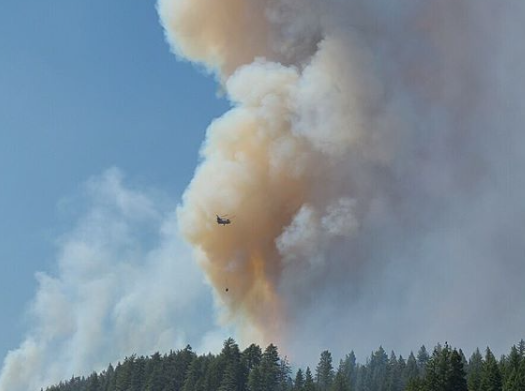
MYTH: FIREFIGHTERS DON’T GET COVID-19.
FACT: We are not immune to the ravages of Covid.
Nevada firefighters respond to hundreds of thousands of calls annually. Those 911 emergency calls range anywhere from hazardous material and bomb threats to high angle rescue, fires, and emergency medical calls. With emergency medical calls, we have definitely been on the front lines of Covid.
Since day 1, your Nevada firefighters have been there. They have painstakingly worked around the clock to not only protect you from the hazards of fire and other emergencies, but also from Covid. With that risk, comes sacrifice. Even though we have the personal protective equipment, hundreds of firefighters across Nevada have contracted Covid through work. Luckily, most have been able to come back without any permanent issues, but some will have long-lasting and impactful health consequences. The bottom line is, we love our community and will do anything to keep you safe!
MYTH: WE JUST SIT AROUND AND WAIT FOR EMERGENCIES.
FACT: We have MANY duties throughout the day, including paperwork and reports, vehicle/apparatus maintenance, cleaning & fixing the station, extensive hands-on training & ongoing emergency educational training to maintain certs and qualifications, and much more!
We wear many hats, not just the one that comes with our turnouts, including:
1. Plumber
2. Electrician
3. Carpenter
4. Social worker
5. Psychologist
6. Auto detailer
7. Auto repair person
8. Maid
9. Mechanic
10. Teacher
11. Chef/cook
12. Administrative assistant (secretary)
13. Dishwasher
14. Janitor/custodian
15. Landscaper
16. Painter
17. Police Officer
18. Service station attendant
19. Accountant
20. Financial advisor
21. Truck driver
22. Facilities manager
23. Food server
24. Waiter/waitress
25. Recreational coordinator
26. Career planner/advisor
27. Maintenance person (handyman)
28. Dietician
29. Appliance repair person
30. Heating, Ventilation, Air Conditioning repair person
31. Tow truck driver
32. Customer service representative
33. Public educator
34. Public information provider
35. Computer technician
36. TV repair person
37. Fire prevention inspector
38. Fire investigator
39. Medical professional (first responder, EMT, paramedic)
40. Hazardous materials first responder
41. Rescue technician (basic or advanced)
42. Firefighter (oh, yes, on occasion, we are still asked to put out fires!)
MYTH: MODERN FIREFIGHTERS DO NOT FIGHT MANY FIRES.
FACT: Believe it or not, Firefighters across the country respond to over 1.3 million fires annually!
These fires cause more than 3,500 civilian fire deaths and 16,600 reported civilian fire-related injuries with property damage estimated at $14.8 billion. In 2019, a fire department responded to a fire somewhere in the US every 24 seconds. And that doesn’t even include wildland fires.
Last year, wildland fires aggressively burned more than 83,000 acres of Nevada land in over 600 individual fires across the silver state. Lucky for Nevadans, we have our professional firefighters on the front lines protecting you!
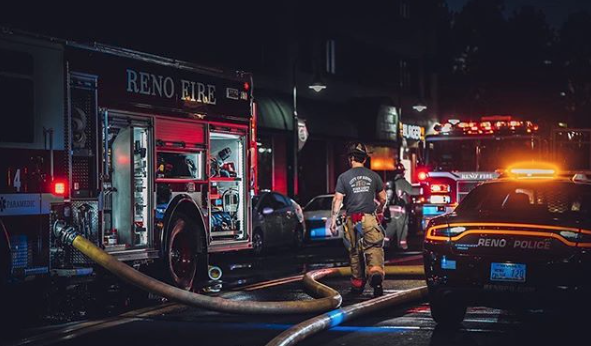
If you’d like to help Nevada firefighters honor their fallen brothers and sisters, please consider a donation to our new memorial.


